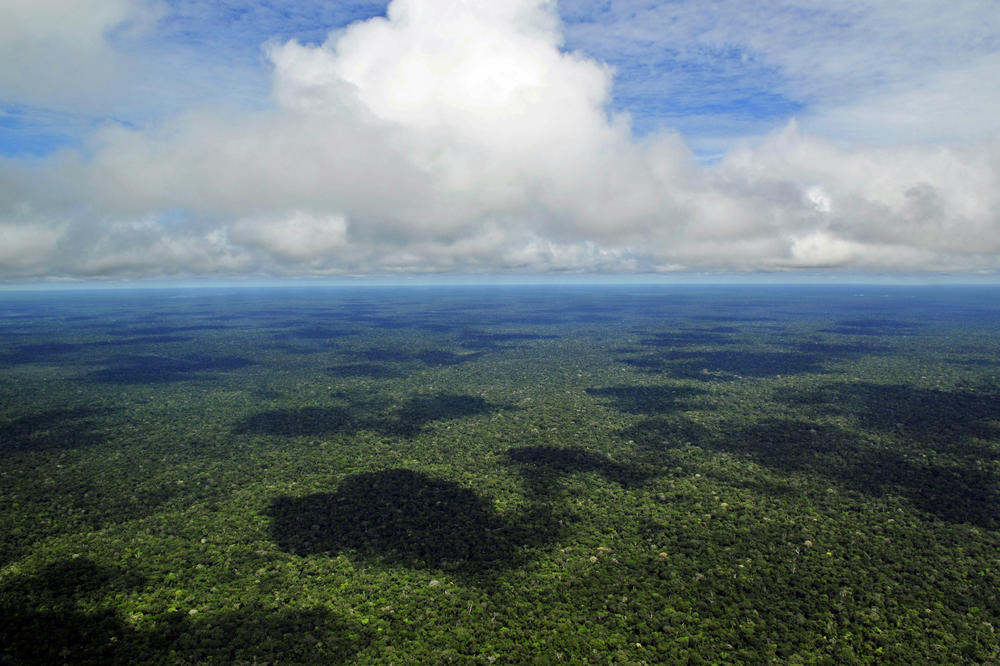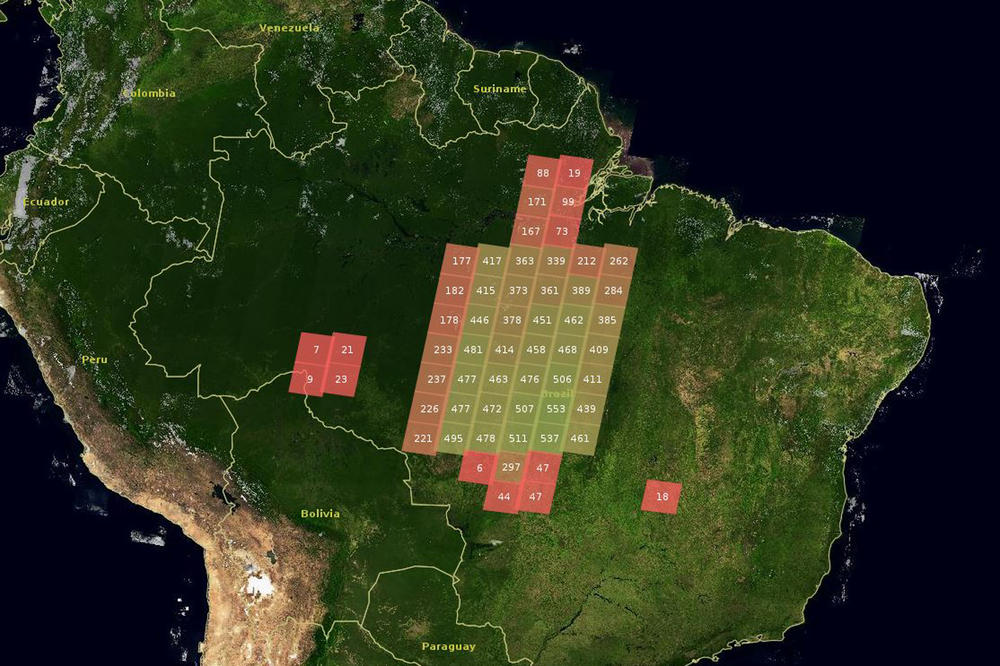Satellite Data to Monitor Deforestation
With a project in the Amazon region, geographers from Freie Universität and Humboldt-Universität zu Berlin are setting the course for using satellites to continuously observe the Earth.
Jun 22, 2018
As the Earth’s “green lung,” the Brazilian rainforest absorbs large amounts of climate-damaging carbon dioxide through photosynthesis.
Image Credit: Flickr / NEIL PALMER PHOTOGRAPHY
Despite restrictive regulations introduced by the Brazilian government, the deforestation of the country’s rainforest is continuing unabated. The profitable cultivation of cheap agricultural products, such as soy – also used as animal feed in Germany – and the extensive use of large areas as pasture land are the reasons behind the illegal clearing of the forest. This deforestation is resulting in the global balance of carbon becoming increasingly precarious, thus exacerbating climate change: through photosynthesis. An intact rainforest stores large amounts of carbon dioxide. However, as it is difficult to access the area, which is several times larger than Germany in size, it is not possible to monitor the near-term depletion of nature on the ground.
How suitable are modern remote sensing satellites for area-wide mapping of logging dynamics? And what information can actually be derived from their data? As part of the SenseCarbon (Sentinels supporting carbon estimates and REDD+) project funded by the Federal Ministry of Economics and Energy in Germany, the geographers Patrick Hostert from Humboldt-Universität zu Berlin and Björn Waske from Freie Universität Berlin examined these questions in detail.
“Sentinels are a new generation of satellites equipped with high-resolution optical and radar sensors. In the future, they will be able to closely monitor global environmental processes,” Patrick Hostert explained. The first of their kind were launched by the European Space Agency (ESA) in 2013 as part of the Copernicus European Earth Observation Program. The aim of SenseCarbon was to develop suitable methods for evaluating and assessing satellite data at an early stage, as well as for handling the gigantic amounts of data arising from this.
Similar to radar control in road traffic, a sensor measures the transit time of the radar signal. The amount of backscattering depends on the nature of the Earth’s surface.
Patrick Hostert is an expert in optical sensors and big data, Björn Waske is a specialist in radar data. In the SenseCarbon project, they can combine their expertise: while optical sensors are virtually “blind” in dense cloud cover, radar beams (microwaves) penetrate to the Earth in all weathers, drawing a slightly different picture of the planet. For laypersons, radar images are difficult to interpret. Similar to radar control in road traffic, a sensor measures the transit time of the radar signal. The amount of backscattering depends on the nature of the Earth’s surface. “Because only little energy comes back, a calm lake appears almost black, damp soils are also dark. Vegetation, on the other hand, is grayish or light,” Waske explained.
Fields of activity of the project in Brazil. Each box corresponds to an area of 200 x 200 km – the recording’s so-called “footprint.” The figures provide information about Landsat satellite data per footprint (green=a lot of data; red=little data)
Image Credit: Geographie, Humboldt-Universität zu Berlin
By combining both types of images, researchers can now create a much more informative map of a certain area: the optical data provide information on the vegetation and its “state of health.” The radar images allow statements to be made about surface roughness and moisture content, which both change, for example, during deforestation processes.
From an altitude of over 700 kilometers, the Sentinel satellites deliver images with a resolution of 10 to 20 meters. You can already see a large tropical tree. “But we’re not really so interested in an individual tree, but rather the forest. To be specific: if an area is currently being deforested or not, and what happens to the cleared area afterward, i.e., what the cleared land is used for,” said Hostert.
“The satellites send us new images every few days. This allows us to virtually permanently observe the Earth.” Patrick Hostert
Sentinel satellites not only bring a hitherto unknown sharpness into the Earth’s image, but also significantly increase the temporal resolution. “While we used to only receive data every few weeks, these satellites now provide us with new images every few days. This allows us to virtually observe the Earth permanently.” The Sentinel 2 satellites, for example, in contrast to their predecessors, can cover a much wider area: they record tremendous 290 kilometers simultaneously. If you consider the high resolution, you can easily guess what an incredible amount of data this is.
“On the one hand, we have developed methods with which we can now use high-resolution satellite data in denser time periods to very precisely map the land use of a region,” says Hostert. For another part of the project, the researchers evaluated Landsat data over the last 30 years for the Brazilian federal states of Para and Mato Grosso in the core region of the Amazon basin. “This resulted in the first map which we are able to use to look back to see how deforestation was progressing there in the 1980s.”
The two geographers have known each other since their time at Universität Trier and their complementary research fits perfectly into the cooperation between the two Berlin universities. Patrick Hostert has been researching and teaching at Humboldt-Universität zu Berlin since 2002, and Björn Waske came to Freie Universität three years ago. “We have also been cooperating closely since then, which is wonderful,” says Hostert. “Our expertise supplements each another and is perfectly complementary.”
SenseCarbon ran from 2013 to 2016. The project’s results were recently published. The aim of continuous remote sensing of the Earth is to keep a close and reliable eye on climate change, changes in land use, and the extent and consequences of natural disasters. But other processes, such as increasing urbanization, are also best followed from a distance.
The good cooperation between and with the two geographers is also fruitful for the authorities in Brazil: the new mapping methods now provide them with timely information that they can compare with their court evidence against farmers who illegally tamper with the rainforest.


